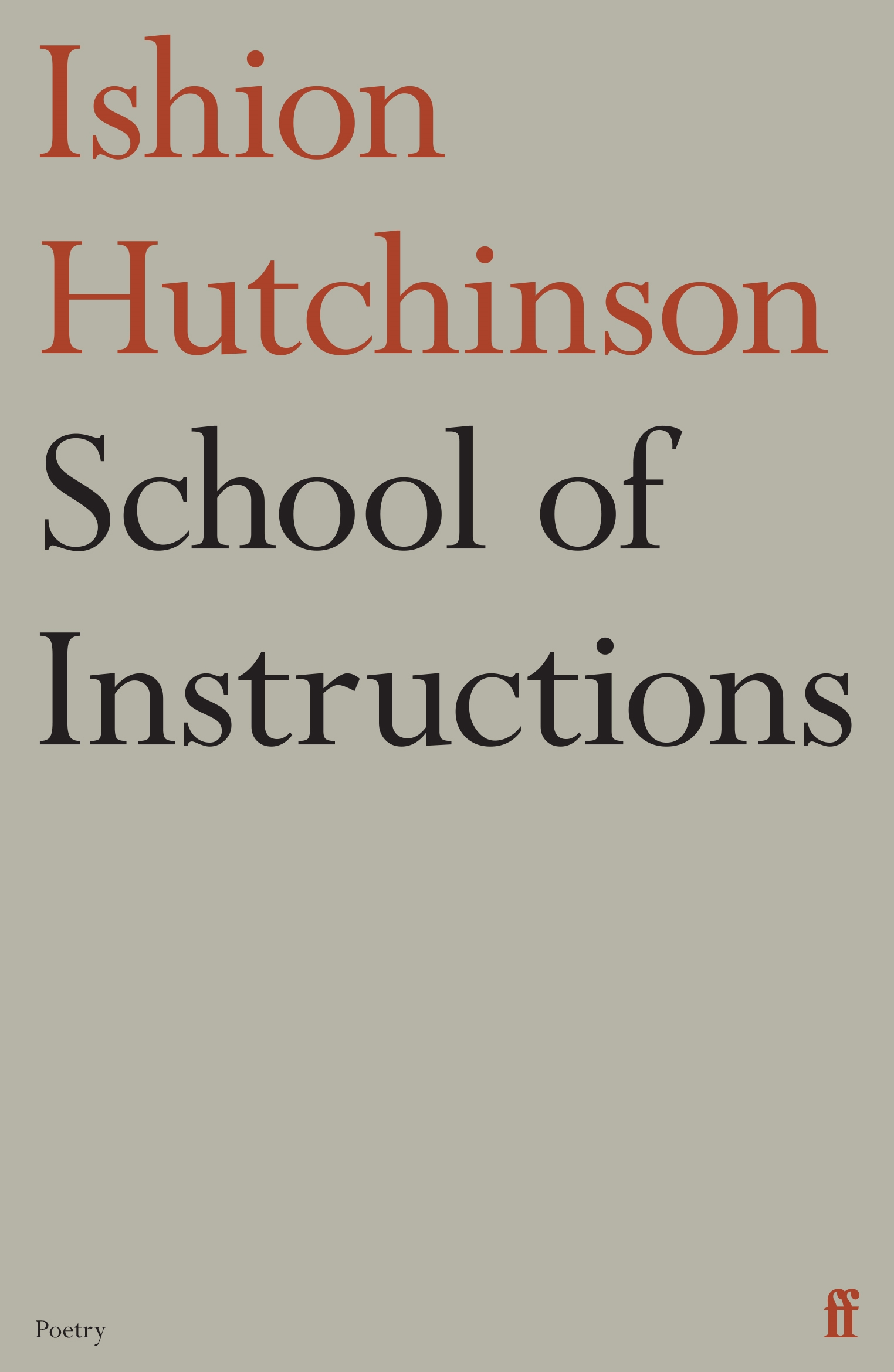School of Instructions, a book-length poem composed of six sections, is a virtuosic dance between memory and forgetting, distant tragedy and personal grief. At times, Hutchinson’s language perhaps forgets itself in its own excess. His lines are richly luminescent, never cold or monochromatic.
However, criticism of this opulence, a style described by Carol Rumens as "sea-lit", disintegrates when the radiance of lines like "the cherry-magnified boy who felt keenly fractures in / his bones clicking like wings" appear. Hutchinson marries words emphatically, with a constant attention to music. His strongest lines, delicately rhythmic and textured, sing praises.
The poem carries two plots, and the acrobatic intricacy of Hutchinson’s lines encompasses a range of geographic and temporal settings. Most clearly, the poem tells the coming-of-age story of Godspeed, a young schoolboy maturing in rural Jamaica. Yet Godspeed’s life is interwoven with stories of soldiers, hauled from mud and sand "where the anonymous / sprung up a permanent humility". Informed by research in the archives of the Imperial War Museum, Hutchinson explores the memory of Caribbean soldiers who fought in the British West Indies Regiment in the Middle Eastern campaigns of 1916 to 1918. The men of this regiment were, effectively, pawns of British expansion tactics, vessels for displacement and exploitation in the "HOLY PLACES of EGYPT SINAI PALESTINE and of SYRIA". The soldiers are acknowledged by Hutchinson as casualty statistics, but most emergencies of this archival material are veiled and apparitional. In School of Instructions, there is none of the heavy-handed emotional description critiqued by Chad Campbell in his review of House of Lords and Commons, Hutchinson’s second collection. Emotions, here, are delicately restrained. Like Godspeed, the reader has the feeling of being "dubdrunk", buoyed in a sea of warm, turquoise language, half-aware of the depths of history below.
Godspeed’s knowledge of the past is informed by a distorting almanac, his Encyclopaedia Britannica. However, the ‘brittle bible sheets of his Britannica’ cannot give him truth, only more ‘bourrage de crâne’, insisting on further insidious colonial ideology such as the idea that "Every man who went from Jamaica to the front was a volunteer. 10,000." Hutchinson highlights the irony of Western powers unshouldering responsibility for these injustices, exploiting the labour of Caribbean soldiers in further annexation. Across School of Instructions, Godspeed slowly learns to reach beyond the white-washed pages of his Britannica, which abnegates the catastrophic reality of land seizure. He journeys towards a new kind of encyclopedism and discovers knowledge preserved within the land, unearthed by tender commemoration.
With Godspeed, Hutchinson captures the restless exuberance of living, the glittering pulse of a firefly’s wing and the dazzling blue of the Caribbean Sea. This is a poem of "black luminosity":
A lateral skanking natty dread at the bus depot in
GOLDEN GROVE told the boy that Jesus was of no
place but here and touched his chest.
Godspeed holds his "jam jar of fireflies" even after he has "unplugged the sun and went / to bed". He is a child, unequipped for any prophetic journey, a voice of "God mud". The architecture of religious faith is fragile, a stained-glass window easily fractured. Technology and architecture can be powered down and pulled to the ground. However, the poem shows the force of the gentle person to hold faith, memory and praise within their heart, telling others to "come gently. Gently like the small rain of rosewater murmuring from a black hand".
 Hutchinson memorialises the dead with glowing linguistic richness, most obvious in the passages where Godspeed mourns his grandmother. He cannot condense her history to a blank wall or page, and her memory refuses to abandon the texture, noise, and warmth of living. The poem describes the perverse architecture of silent memorial on the page or in the archive as a form of neutralised emptiness. Instead, the vivid opulence of his grandmother’s life rings in Godspeed’s ears, "like emerald like carbuncle like gold like a green ringing / green of mildewed croton leaves he would if he could / scatter on the turquoise sea". This memory, rather than being redirected through the white blankness of a history book, is infused in the immediate setting and the land.
Hutchinson memorialises the dead with glowing linguistic richness, most obvious in the passages where Godspeed mourns his grandmother. He cannot condense her history to a blank wall or page, and her memory refuses to abandon the texture, noise, and warmth of living. The poem describes the perverse architecture of silent memorial on the page or in the archive as a form of neutralised emptiness. Instead, the vivid opulence of his grandmother’s life rings in Godspeed’s ears, "like emerald like carbuncle like gold like a green ringing / green of mildewed croton leaves he would if he could / scatter on the turquoise sea". This memory, rather than being redirected through the white blankness of a history book, is infused in the immediate setting and the land.
On a first read, the order in which the sections of the poem are arranged is somewhat anticlimactic. The final section of the poem is called "An Engravement". Hutchinson ends the book by lifting the veil from history’s "shadowed chains" and inscribes the "investiture" of its reader in its construction of a gravestone or plaque on the penultimate page, where names are seemingly engraved. Hutchinson lists the names of all those from Portland, Jamaica, who died in the Middle Eastern campaigns, and whose "BLOOD STILL ECHOES" through the landscape to which they never returned. The construction of a paper-gravestone, in the final pages of the book, could be interpreted as a weaker ending, a return to the material rather than the musical or emotive – the lines of dub-eulogy in the final pages of the fifth section, "In Praise of a Shadow", are far more emphatically charged and viscerally affecting. However, "An Engravement" is powerful because it exposes the historical irreverence of the sections that came before it, their escape into language and dream.
William Logan has described Hutchinson’s poetry as being written "with an estrangement that doesn't need the justifications of theory". In School of Instructions, Hutchinson deftly reveals the estrangement of the present from the past, and implicitly shows the looming temptation to abnegate the unembodied messages learnt from history, to skip class and be freed from instruction. Across the poem, the reader becomes like Godspeed, wishing our kindest farewells to history, and racing away from the claustrophobic brick walls of the Imperial War Museum. In these final pages, Hutchinson reminds us that this history will necessarily erupt from sand and lie heavy in the path of all those who wish to dance away from it. To grow up, they must begin to listen to its instructions.
- School of Instructions by Ishion Hutchinson (Faber & Faber, £10.99)
- More book reviews on theartsdesk















Add comment